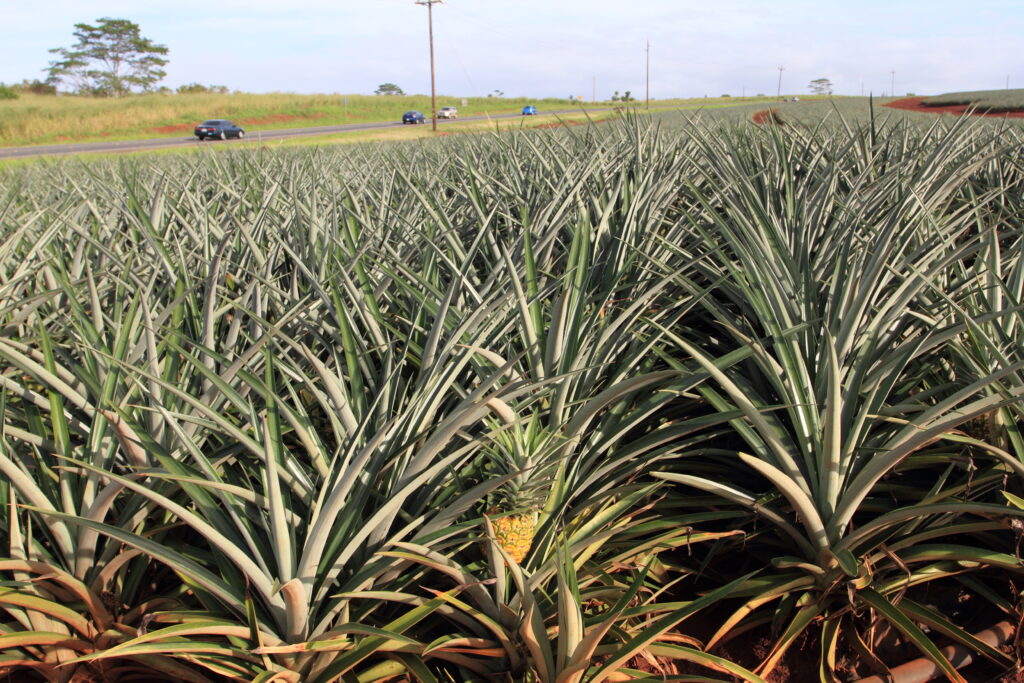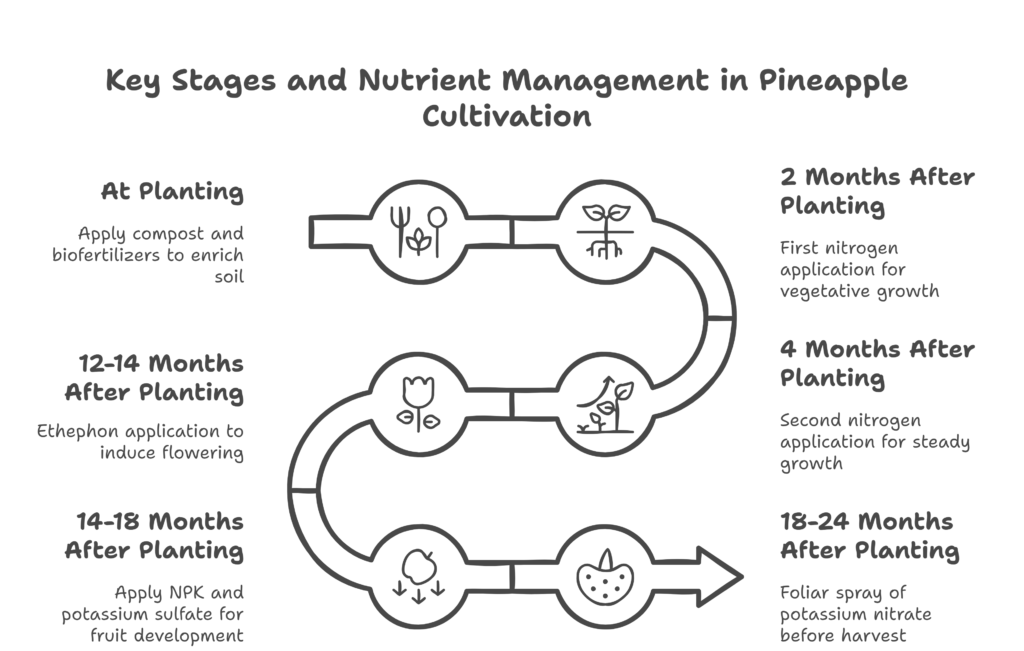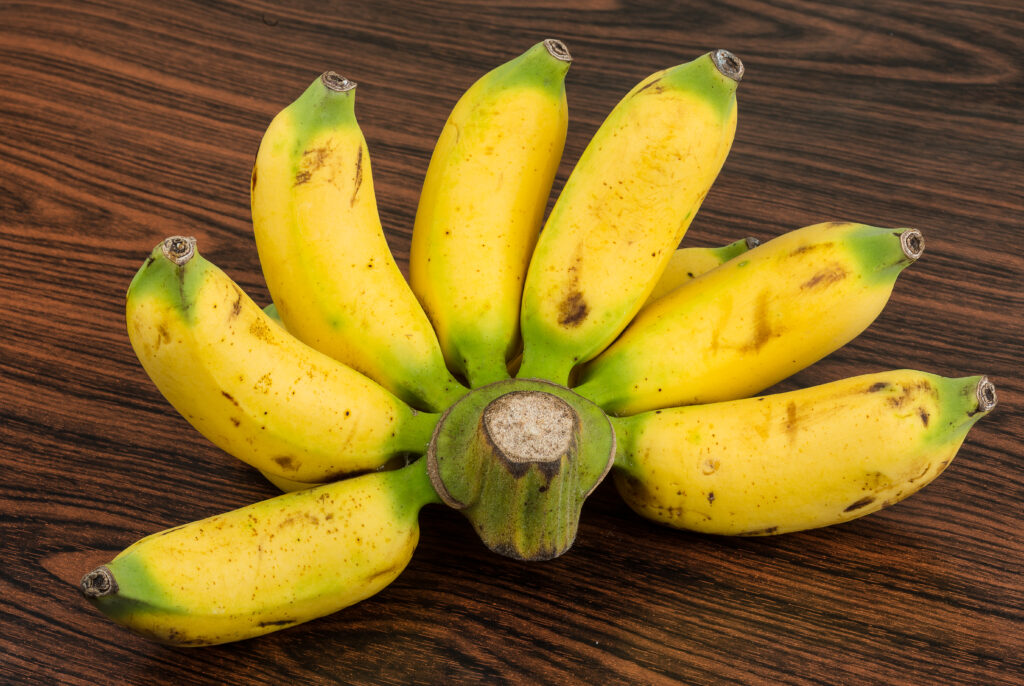Pineapple Farming
Pineapple farming has become a highly profitable agricultural venture, offering significant financial returns for farmers who venture into cultivating this tropical fruit. With a net profit of approximately NRs. 5,77,000 per acre by the second year, pineapple farming demonstrates its potential as a lucrative investment. The pineapple farming profit per acre can be further boosted by the opportunity to earn additional income from ratoon crops, which can yield an extra 30–50% of the main harvest, potentially adding up to NRs. 6,52,500 to the farmer’s income.
By implementing optimized farming practices such as efficient irrigation, effective soil management, and pest control, while keeping production costs low, farmers can maximize their earnings and achieve long-term financial success.
Pineapple farming not only serves as a sustainable income source but also promotes agricultural diversification, making it an appealing option for both small-scale and commercial farmers. The financial analysis underscores its viability, with a total cultivation cost of NRs. 7,28,000 and a second-year income of NRs. 13,05,000, solidifying pineapple farming as a profitable and sustainable agricultural enterprise.
Pineapple life cycle
The pineapple life cycle spans approximately 18 to 24 months, beginning with planting the crown, sucker, or slip, followed by vegetative growth, flowering, fruiting, and eventual harvest, with the potential for ratoon crops to extend productivity. Here are the details about the pineapple life cycle:
| Stage | Duration | Key Activities |
| Planting | Day 0 | Planting suckers, slips, or crowns. |
| Vegetative Growth | 6–12 months | Leaf and root development. |
| Flowering | 12–18 months | Flower stalk emerges. |
| Fruit Development | 5–7 months after flowering | Fruit grows and matures. |
| Harvesting (Main Crop) | 18–24 months | Main fruit is harvested. |
| Ratoon Crops (Optional) | 12–18 months after main crop | Secondary fruits are harvested. |
| End of Lifecycle | 2–3 years | Plant is uprooted, and the cycle restarts. |
Land Preparation
Land preparation is a foundational step in pineapple farming, setting the stage for successful cultivation and optimal crop yields. This process involves clearing the land of any existing vegetation, rocks, or debris, and thoroughly removing weeds that could compete with the pineapple plants for nutrients and water. The soil is then tilled and leveled to create a suitable planting environment, ensuring proper drainage and aeration, which are essential for healthy root development.
Additionally, soil testing may be conducted to determine nutrient levels and pH, allowing farmers to make necessary amendments to create ideal growing conditions. Proper land preparation not only promotes vigorous pineapple growth but also helps prevent pest and disease issues, making it a critical step in achieving a productive and profitable pineapple farm.
Soil Type for Pineapple Cultivation
Sand loam, loamy, or well-drained soils with a pH of 5.5 to 6.5 are ideal for pineapple growth because they allow for the optimum uptake of nutrients. Proper drainage keeps roots from rotting and waterlogging. Rich in organic matter and micronutrients like calcium and magnesium, fertile soils improve yield, growth, and fruit quality. Enhancing soil structure and nutrient availability can be achieved by adding manure or compost. Before planting, assess the pH of the soil and make any necessary amendments with sulfur or lime.
Climate Requirements for Pineapple Cultivation
Pineapples thrive in tropical and subtropical climates, where consistent warmth and humidity support their growth and fruit development. The ideal temperature range for successful pineapple cultivation is between 20°C and 30°C. Temperatures below 15°C can slow growth and delay fruiting, while temperatures above 35°C may cause sunburn on the fruit and reduce quality.
Moderate rainfall of about 1000 to 1500 mm annually is optimal for pineapple plants. While pineapples are drought-tolerant due to their CAM (Crassulacean Acid Metabolism) mechanism, which helps them conserve water, regular moisture is crucial during the vegetative and flowering stages to ensure healthy plant growth and maximum yield.
Pineapples are sensitive to waterlogging and excessive moisture, which can lead to root rot and fungal infections. Therefore, well-drained soil and supplemental irrigation during dry periods are necessary to maintain adequate moisture levels without oversaturating the roots.
The plant is highly susceptible to frost, which can damage leaves, halt growth, and even kill young plants. Pineapples should be grown in areas free from frost or in regions where protective measures can be taken during colder months.
Pineapples need constant sunlight all year round for the best fruit quality. While too much extreme heat without protection might harm the fruit, inadequate light can result in poor fruit development and lower sugar content.
In areas with seasonal variations, it is advisable to plant pineapples at the beginning of the rainy season to ensure adequate water availability during early growth, while supplemental irrigation may be necessary during the dry season.
Major Cultivars
The pineapple cultivation industry features a diverse range of major varieties, categorized into three primary groups.
a). Cayenne group
The Cayenne group includes popular varieties such as Smooth Cayenne, Kew, Giant Kew, Typhones, Sarawak, Champaka, Hilo, and Charlotte, known for their high yield and suitability for processing.
b). The Queen groups
The Queen group comprises varieties like Queen, Mauritius, Ripley Queen, James Queen, Alexandra, Common Rough, and Victoria, which are prized for their sweet flavor and compact size, making them ideal for fresh consumption.
c). The Spanish group
Varieties in the Spanish group, including Red Spanish, Singapore Spanish, Cabezona, Selengor Green, Gandol, Betek, Castilla, and Pina de Cumana, are known for their ability to withstand disease and adapt to a range of growing environments. Farmers can choose varieties according to their own farming objectives and market demands thanks to the distinctive qualities that each group offers.
Planting
Selecting superior propagation resources, such as suckers (shoots developing from the base of the plant), slips (tiny shoots sprouting from the fruit stalk), and crowns (the leafy top of the fruit), is the first step in pineapple cultivation. To guarantee good growth, these materials are planted in soil that has been prepared with due consideration for arrangement and spacing. Making the most of available space, sunshine, and resources requires careful orchard planning. The Double Row Planting System is a popular technique that involves placing two rows of pineapple plants closely together on a single raised bed with a greater distance between the beds.

Spacing Details
- Width of raised bed:1 meter.
- Spacing between the two rows on the same bed: 45 cm, allowing sufficient room for growth without overcrowding.
- Spacing between plants in a row: 30 cm, ensuring optimal plant density.
- Spacing between beds: 60 cm, providing access for irrigation, fertilization, and harvesting.
Planting Layout
- Raised Beds: Double rows are planted on raised beds to enhance drainage and prevent waterlogging, which is critical for pineapple health.
- Plant Arrangement: Plants are arranged in a zigzag or staggered pattern within the double rows to maximize space utilization and sunlight exposure.
Additional Considerations
- Planting Season: The ideal time for planting is during the rainy season or when irrigation facilities are available.
- Planting Method: Depending on soil drainage, pineapples can be planted in raised beds or flatbeds.
- Number of Plants per Acre: Approximately 17,400 plants can be cultivated per acre, depending on the spacing and planting system used.
Irrigation of Pineapple
Because pineapples require consistent hydration, especially during dry seasons, effective irrigation techniques like drip or sprinkler systems are crucial for their healthy development. During the vegetative stage, each plant needs about 2-3 liters of water per week, and during flowering and fruiting, that amount rises to 3-5 liters per week. Waterlogging and root rot can be avoided with proper drainage, and mulching helps retain soil moisture and lower evaporation.
The most effective method is drip irrigation since it minimizes water loss by delivering water straight to the roots. Maintaining soil moisture levels between 50 and 70 percent of the field’s capacity is advised, and irrigation should be adjusted seasonally, rising in hotter months and falling in rainier ones. Because pineapples are sensitive to too much moisture, overwatering can harm the roots and have a detrimental effect on the health of the plant.
Irrigation Schedule for Pineapple Based on Growth Stage
| Growth Stage | Duration | Irrigation Frequency | Purpose | Method of Irrigation |
| Initial Growth Stage | 0–4 months | Every 7–10 days (twice a week in dry weather) | Promote root development and leaf growth | Drip irrigation or light sprinkling |
| Vegetative Stage | 5–12 months | Every 10–15 days (adjust with rainfall) | Support leaf expansion for better photosynthesis | Drip irrigation (preferred) |
| Flowering & Fruit Development | 13–18 months | Once a week (more frequently in dry periods) | Ensure uniform flowering and fruit set | Drip irrigation or sprinkler |
| Ripening Stage | 19–24 months | Every 15–20 days (reduce frequency) | Enhance sugar content and fruit quality | Drip or furrow irrigation |
| Post-Harvest Stage | After harvesting | Once a month (if maintaining ratoon crops) | Support sucker growth for the next cycle | Light irrigation (if necessary) |
Fertilizer and Manure for Pineapple
For optimum growth and yield, pineapple plants require a balanced supply of potassium, phosphorus, and nitrogen. Compost and farmyard manure are examples of organic fertilizers that increase soil fertility and offer long-term sustenance. Pineapples are nutrient-demanding crops that need careful fertilization. Because of its effective absorption, ammonium sulfate is a preferred source of nitrogen. Using inorganic fertilizers excessively can damage soil health, contaminate water, raise expenses, and reduce profitability. For pineapple farming to be successful over the long run, a sustainable, balanced fertilization strategy is essential.

a). At Planting
During the planting phase, it is essential to apply the following fertilizers and soil amendments to ensure healthy growth and establishment of pineapple plants:
- Compost:Apply 10 tons of compost per acre to enrich the soil with organic matter and improve its structure.
- Trichoderma viride:Use 2.5–5 kg per acre by mixing it with well-decomposed compost or farmyard manure (FYM) and incorporating it into the soil during land preparation or at the time of planting. This helps enhance soil health and suppress soil-borne pathogens.
- Biofertilizer Mixture: Apply a biofertilizer blend consisting of Azospirillum, Phosphate Solubilizing Bacteria (PSB), and Potash Mobilizing Bacteria at a total dose of 6 kg per acre. The recommended composition is:
- Azospirillum:2 kg per acre.
- PSB:2 kg per acre.
- Potash Mobilizing Bacteria:2 kg per acre.
This biofertilizer mixture promotes nutrient availability, enhances root development, and supports overall plant growth, ensuring a strong foundation for the pineapple crop.
b). Vegetative Stage (2-6 months)
During the vegetative stage, pineapple plants require a significant supply of nitrogen to support robust leaf and root development. To meet this demand, apply 40 kg of nitrogen per acre, using either urea or ammonium sulfate as the nitrogen source.
This amount should be split into two equal doses: the first applied at 2 months after planting and the second at 4 months after planting. Split application ensures efficient nutrient uptake, minimizes losses, and promotes steady growth throughout this critical phase. Proper nitrogen management during the vegetative stage lays the foundation for healthy plant development and higher yields in subsequent stages.
c). Flower Induction (12-14 Months After Planting)
To initiate flowering in pineapple plants, apply ethephon at a rate of 2 ml per liter of water. This treatment effectively promotes flower formation, ensuring timely and uniform flowering across the crop. Additionally, to enhance the quality of flowers and fruits, spray a solution containing boron and zinc, each at a concentration of 1 gram per liter of water. This micronutrient application supports better fruit development, improves yield, and contributes to overall crop health during this critical stage.
d). Flowering Stage (14-18 Months)
During the flowering stage, pineapple plants benefit from targeted nutrient applications to support fruit development and quality. Apply 50 kg of NPK (15:15:15) per acre to provide a balanced supply of nitrogen, phosphorus, and potassium, essential for healthy growth and fruit formation. Additionally, apply 25 kg of potassium sulfate per acre to enhance fruit size, improve quality, and ensure optimal sugar content. These applications help maximize yield and produce high-quality pineapples during this crucial growth phase.
e). Fruit Development Stage (18-24 Months)
During the fruit development stage, pineapple plants require specific nutrients to enhance fruit quality and sweetness. Apply 25 kg of potassium sulfate per acre to improve the sweetness and overall quality of the fruit. Additionally, 1-2 months before harvesting, perform a foliar spray of potassium nitrate at a rate of 2 grams per liter of water. This spray helps enhance fruit color, sweetness, and marketability, ensuring a high-quality harvest. These practices contribute to producing premium pineapples with desirable taste and appearance.
Pest and Disease
Common pests include mealybugs and nematodes, while diseases like root rot and wilt can affect yield. Regular monitoring and integrated pest management (IPM) are essential.
Pests in Pineapple Farming
Pests including mealybugs, nematodes, scale insects, and thrips, as well as illnesses like root rot and wilt, can make pineapple farming difficult and drastically lower output. For example, mealybugs produce honeydew and feed on plant sap, which causes sooty mold that inhibits photosynthesis. Nematodes harm roots by preventing them from absorbing water and nutrients, particularly root-knot nematodes.
Thrips and scale insects also deplete plant vitality, which results in stunted growth and subpar fruit. Integrated pest management (IPM), which combines cultural techniques (such as crop rotation and sanitation), biological controls (such as natural predators), and the prudent application of chemical pesticides, is necessary for effective management. Healthy crop development and infestation prevention depend on routine monitoring and early response.
Diseases in Pineapple Farming
Pineapple plants are also vulnerable to various diseases, which can affect both the foliage and the fruit. Root rot, caused by fungi like Phytophthora and Pythium, is a common disease that occurs in waterlogged soils, leading to wilting and plant death. Heart rot, caused by Phytophthora cinnamomi, affects the central leaves, causing them to turn brown and die. Fusarium wilt, caused by Fusarium guttiforme, is another serious disease that leads to yellowing and wilting of leaves, eventually killing the plant.
Fungal diseases like black rot (Ceratocystis paradoxa) can affect the fruit, especially during storage, causing it to rot and become unmarketable. To manage these diseases, farmers should ensure proper drainage, use disease-free planting material, and apply fungicides when necessary. Crop rotation and field sanitation are also effective cultural practices to reduce disease incidence. Early detection and prompt management are essential to minimize the impact of diseases on pineapple crops.
Cost of Investment per Acre (NRs.)
All the costs mentioned are expressed in Nepalese Rupees (NRs.).
| S.N. | Categories | Estimated Cost (NRs.) |
| 1 | Land Preparation (plowing and leveling) | 30,000 |
| 2 | Raised bed making for planting suckers | 40,000 |
| 3 | Pineapple suckers (17,400 plants × NRs. 20) | 348,000 |
| 4 | Fertilizers and Manure | 70,000 |
| 5 | Irrigation system set up (Drip) | 150,000 |
| 6 | Labor Costs (Planting, maintenance) | 30,000 |
| 7 | Pest & Disease Control | 30,000 |
| 8 | Miscellaneous Costs (equipment, mulch, etc.) | 30,000 |
| Total Cost | 728,000 |
Income from 1 Acre of Pineapple Farming
| Income of Year | Estimated Yield/Plant | Total Yield/Acre | Market Price (NRs.)/kg | Total Income (NRs.) |
| 2nd Year | 1.5 kg | 26,100 kg | 50 | 13,05,000 |
Analysis of Pineapple Farming Profit per Acre
a). Total Cost of Investment: NRs. 728,000.
b). Total Income in the 2nd Year: NRs. 13,05,000.
c). Net Profit
- Net Profit = Total Income – Total Cost.
- Net Profit = NRs. 13,05,000 – NRs. 728,000 = NRs. 5,77,000.
Key Points to Consider
- Break-Even Point
The farmer will recoup the initial investment and begin generating profits starting from the second year of pineapple cultivation.
- Additional Income from Ratoon Crops
After the primary harvest, ratoon crops (secondary fruits) can yield an additional 30–50% of the main crop’s output. For instance, if the ratoon crop produces 13,050 kg (50% of the main crop), the extra income would amount to:
- 13,050 kg × NRs. 50 = NRs. 6,52,500.
This supplementary income significantly boosts the overall net profit.
- Long-Term Profitability
Pineapple farming becomes increasingly profitable in the following years as the initial setup costs, such as irrigation systems and raised beds, have already been accounted for. This reduces ongoing expenses and enhances the financial returns.


